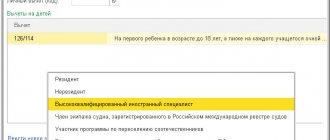What is a currency transaction type code?
KVBO is a five-number value indicating the type of transaction. The code is selected depending on the purpose of the payment and the content of the documents accompanying the transaction. If the payment order and code do not match, the payment is rejected. The list of QVBOs is contained in Central Bank Instruction No. 181-I dated August 16, 2021.
How to make a foreign currency payment and what documents to submit to the bank ?
Where should I put the code? If this is an order for a transaction in rubles, you need to put it before the text about the purpose of payment. In other banking documents, KVVO is indicated in a line specially designated for this. The code is both alphabetic and numeric values. There is no need to put spaces or other symbols between letters and numbers.
KVVO consists of two parts. The first indicates the class of the transaction, the second – its essence. Let's look at an example. Operation code – 10100. Its components:
- 10 – indicates the export of products from the territory of Russia.
- 100 – indicates that the buyer made an advance payment.
the bank's commission for currency control in accounting and tax accounting ?
The very presence of this code means that this is a transaction with a foreign counterparty.
FOR YOUR INFORMATION! Sometimes an accountant encounters problems when choosing a KVBO. There are a lot of codes in the Central Bank instructions. It is not always easy to decide which one is suitable for a particular operation. If an accountant is afraid of making a mistake, he can ask a representative of the servicing bank for advice.
Sample of filling out a payment order for a non-resident (in Russian rubles)
The payment order is filled out for the transfer of Russian rubles, so its usual filling procedure is maintained in accordance with the documents and details of the counterparty, except for the currency transaction code, which must be indicated in the final field of the payment order. To do this, before the text in the “Purpose of payment” field, write VO in capital Latin letters, and then the five-digit transaction code from the table below. The code must be enclosed in curly braces.
Let’s assume that the Russian organization VESNA LLC needs to pay wages to its employee who works remotely from Kazakhstan and is not a resident of the Russian Federation. In this case, fill out the payment form as usual, and in the appropriate field write:
{VO70060} Salary of Abdurakhmanov Ilyas Karimovich for November 2021.
The given example of filling out a foreign currency payment order shows how to specify the code.
Code groups
The KVVO group is the first 2 digits that reveal the class of the operation. Let's look at these groups and their meaning:
- 01 and 02 – non-cash conversion payments.
- 10 and 11 – payment for export or import of products.
- 12 and 13 – payment for products without import and export.
- 20 and 21 – payment for services, work, rights to intellectual activity.
- 22 and 23 – payment under mixed type agreements.
- 30 – payments for real estate.
- 32 – payment under an agreement for assignment of claims.
- 35 – other payments.
- 40 and 41 – issuance of loans.
- 42 and 43 – payment of loans and interest on them.
- 57 – payment under trust agreements.
- 58 – payment under brokerage service agreements.
- 70 – transactions not related to trade (for example, transfer of salary or pension).
- 90 – other operations.
The next three numbers reveal the contents of the operation. Example: code 70 affects a non-trading transaction. The last numbers indicate which transfer was made. For example, this could be the payment of travel allowances.
How to decipher KVVO
There is a table that makes it easy to decipher the first two digits of any KVVO.
| 01 | Currency conversion payments made by individuals or Russian companies by bank transfer |
| 02 | Foreign currency conversion non-cash transfers carried out by foreign citizens or companies |
| 10 | Code for settlements between companies from the Russian Federation and foreign companies when conducting foreign trade activities related to the export of goods from the territory of Russia |
| 11 | Currency code when transferring companies from the Russian Federation to foreign companies or individuals when conducting foreign trade activities related to the import of goods into Russia |
| 12 | Transfers of domestic organizations for trade transactions without import of goods to Russia |
| 13 | Payment by foreigners to domestic companies when selling goods directly in Russia |
| 20 | Currency code indicated when paying residents to non-residents when conducting foreign trade activities related to the fulfillment by domestic firms of contractual obligations (work, services, transfer of information, intellectual and exclusive rights) |
| 21 | Payment by organizations from the Russian Federation to foreign companies when carrying out foreign trade activities related to the fulfillment by foreigners of contractual obligations (work, services, transfer of information, intellectual and exclusive rights) |
| 22 | Mutual settlements between residents and non-residents when transferring goods (performing work/services) by domestic firms or individual entrepreneurs |
| 23 | Payment by residents to non-residents when transferring goods (performing work/services) by foreign firms or citizens |
| 30 | Transfers from Russian companies and individual entrepreneurs to foreigners for purchased real estate |
| 32 | Payment by residents to foreigners within the framework of agreements on the assignment of claims (debt transfer) |
| 35 | Code of transfers between residents and non-residents for other foreign trade transactions |
| 40 | Payments for the provision of a cash loan by a Russian company to a foreigner or foreign company |
| 41 | Payment code for the provision of a cash loan by a foreign company from the Russian Federation |
| 42 | Payments when Russian companies fulfill loan obligations |
| 43 | Calculations when foreign companies fulfill loan obligations |
| 50 | Payments upon investment (capital investments) |
| 51 | Transfers when foreigners purchase securities from residents of the Russian Federation |
| 52 | Transfers when Russian companies purchase securities from non-residents |
| 55 | Payments upon fulfillment of obligations under securities |
| 56 | Mutual settlements between Russians and foreigners on derivatives transactions |
| 57 | Payment for transactions related to trust management of assets |
| 58 | Payments for brokerage operations |
| 60 | Payment transactions carried out by foreign companies and citizens on their accounts in Russian rubles in cash |
| 61 | Payments made by Russian companies in foreign currency in cash |
| 70 | Non-trading transactions |
| 80 | Settlements between a bank authorized to carry out foreign exchange transactions and a non-resident in Russian rubles, as well as between a bank and a resident in foreign currency |
| 99 | Settlements for other currency transactions that were not mentioned above |
Let's try to decipher the operation code 10100.
From the table above we immediately see that it is associated with the export of goods. This code usually denotes an advance payment to a resident for goods exported from Russia. The numbers “100” at the end will tell us this. In a similar way, you can decipher any type of currency transaction in a payment order. But to simplify the work, the Central Bank has developed a special table that contains all the necessary values.
KVBO for operations
Here are the codes that usually accompany operations:
- 10100. Prepayment for the export of a batch of products from the territory of Russia.
- 10200. Deferred payment for a shipment transported out of the country.
- 11100. Advance payment to a foreigner for products imported into the country.
- 11200. Settlements with a resident if he is given a deferred payment for a consignment imported into the country.
- 12060. Payment for goods sold by a non-resident. It is assumed that the products were sold abroad, without import into the Russian Federation.
- 13010. Payment from a foreigner to a resident for goods sold in Russia.
- 20100. Prepayment of services or goods in favor of a resident.
- 20200. Payment between a non-resident and a resident for services or work.
- 20400. Payments under agreements on assignments, guarantees to the resident.
- 20500. Payments under guarantee agreements to a non-resident.
- 21100. Advance payment for services or work in favor of a foreigner.
- 35030. Payment to the resident for other actions.
- 35040. Payment in favor of a foreigner for other actions.
- 41030. Lending to a resident by a non-resident.
- 42015. Payment of the principal debt to a non-resident, if the resident has corresponding obligations.
- 61100. Movement of currency from one account to another.
- 61135. Transfer of currency from a resident’s account to an account in another bank.
- 70060. The resident transfers remuneration to the foreigner for work.
- 99090. Other actions and translations not listed above.
This is a list of the most common KVBOs. The remaining codes are in Central Bank Instruction No. 181.
Other operations
KVBO is also needed when working with foreign currency:
- 01010 – sale of currency for rubles.
- 01030 – purchase of currency for rubles.
Code usage example
Products were purchased from a non-resident. It was transported to Russia based on the provisions of a foreign trade agreement. The required code depends on the selected payment type:
- 10100 – for prepayment.
- 10200 – postpaid.
What to do if the goods of a non-resident are located in Russia? Code 13010 is used. The validity of its use is confirmed by an invoice with the Russian address of the product location.
FOR YOUR INFORMATION! Code 13010 is not suitable for fuel and other resources for vehicle operation. The purchase of fuel is accompanied by these KVBO: 22110 (prepayment transaction) and 22210 (postpayment).
Currency control
All transactions with foreign currency are under special control of the state. The main regulatory legislative act of December 10, 2003 No. 173-FZ. The regulation procedure is determined by the Central Bank of the Russian Federation and the Government (Clause 1, Article 5 No. 173-FZ).
The law primarily applies to residents and non-residents. Residents include, inter alia, legal entities created in accordance with the legislation of the Russian Federation, and non-residents include legal entities created in accordance with the legislation of foreign states and located outside the territory of the Russian Federation (Article 1 No. 173-FZ).
Currency transactions between residents and non-residents are carried out through authorized banks (Clause 1.1, Article 19. No. 173-FZ).
As part of control, residents are required to provide authorized banks with the information specified in clause 1.1. Art. 19. No. 173-FZ, including:
- the expected timing of receiving foreign currency or Russian currency from non-residents for the fulfillment of obligations under contracts;
- expected terms of fulfillment by non-residents of obligations under agreements.
Documentation of control requirements is carried out on the basis of Instruction of the Central Bank of the Russian Federation dated June 4, 2012 No. 138-I. It contains the procedure for residents to provide control documents, the forms of these documents, as well as information for filling them out, in particular, the code for the type of currency transaction in the payment order.
Code when paying wages to a non-resident
The company's staff may include non-residents. A non-resident is any person without a Russian passport or citizenship. Within the framework of currency control, it does not matter how long the foreigner lived in Russia. In any case, he is considered a non-resident. When paying remuneration to a foreign person, codes are also used.
Payments in favor of a non-resident are indicated by code 70060. But to use this KVBO, it is not enough to provide only a payment order to the bank. Most likely, you will also need an employment agreement with a foreigner and a copy of his passport.
Remuneration for an employee is not only salary, but also other payments. And each payment is assigned its own code:
- 70200 – payments according to the advance report (for example, travel expenses).
- 70030 – social payments (for example, financial assistance).
- 70120 – payments made by court decision.
Upon payment, accompanying documents are sent to the bank. Their list depends on the type of operation. For example, a non-resident is accrued travel allowances. In this case, a business trip order is sent to the bank.
Payment order for salary to card
A payment order for the transfer of salaries to staff is a document whose execution is not difficult, but it is worth taking into account the nuances of filling out the details.
A legal entity is designated by its full or abbreviated name (both can be done at once), an individual entrepreneur - by status and full name, privately practicing individual entrepreneurs must additionally indicate the type of activity, and it is enough to name an individual in full (without inclination). If funds are transferred to the bank, then the information from field 13 is duplicated. Field 17 is the recipient’s account number. 20-digit account number of the recipient of the funds.
The transfer of salaries to bank cards is provided for in the employment contract. Salaries are issued on the 15th (advance of 50% of salary) and on the last day (final payment) of each month. The total amount of accrued wages to sales department employees for August was 150,000 rubles. Personal income tax is withheld from this amount in the amount of 19,500 rubles.
The employer is obliged to transfer from the amounts paid to the staff to the account of the tax authority a sum of money, which is calculated as a percentage of income.
List of VO codes when making payments from non-residents in favor of non-residents
| 60 | 070 | Transfers of the currency of the Russian Federation from a non-resident’s bank account in the currency of the Russian Federation to another bank account (deposit account) in the currency of the Russian Federation of this non-resident, opened in the same authorized bank, from the deposit account of a non-resident in the currency of the Russian Federation to the bank account of this non-resident, opened in the same authorized bank. |
| 60 | 071 | Transfers of the currency of the Russian Federation from a non-resident’s bank account in the currency of the Russian Federation, opened in an authorized bank, to a bank account (deposit account) in the currency of the Russian Federation of this non-resident, opened in another authorized bank, from a non-resident’s deposit account in the currency of the Russian Federation to a bank account an account of this non-resident opened with another authorized bank. |
| 60 | 075 | Transfers of the currency of the Russian Federation from a non-resident bank account in the currency of the Russian Federation, opened in an authorized bank, to a bank account (deposit account) in the currency of the Russian Federation of this non-resident, opened in a non-resident bank, from a non-resident deposit account in the currency of the Russian Federation, opened in an authorized bank, to a bank account in the currency of the Russian Federation of this non-resident, opened in a non-resident bank. |
| 60 | 076 | Transfers of the currency of the Russian Federation from a bank account (deposit account) of a non-resident in the currency of the Russian Federation, opened in a non-resident bank, to a bank account in the currency of the Russian Federation of this non-resident, opened in an authorized bank. |
| 60 | 080 | Transfers of the currency of the Russian Federation from a non-resident’s bank account in the currency of the Russian Federation to a bank account (deposit account) in the currency of the Russian Federation of another non-resident opened in the same authorized bank. |
| 60 | 081 | Transfers of the currency of the Russian Federation from a non-resident’s bank account in the currency of the Russian Federation, opened in an authorized bank, to a bank account (deposit account) in the currency of the Russian Federation of another non-resident, opened in another authorized bank. |
| 60 | 085 | Transfers of the currency of the Russian Federation from a non-resident’s bank account in the currency of the Russian Federation, opened in an authorized bank, to a bank account (deposit account) in the currency of the Russian Federation of another non-resident, opened in a non-resident bank. |
| 60 | 086 | Transfers of the currency of the Russian Federation from a bank account (deposit account) of a non-resident in the currency of the Russian Federation, opened in a non-resident bank, to a bank account in the currency of the Russian Federation of another non-resident, opened in an authorized bank. |
| 60 | 090 | Withdrawal of cash currency of the Russian Federation from a non-resident’s account in the currency of the Russian Federation opened with an authorized bank. |
| 60 | 095 | Crediting cash currency of the Russian Federation to a non-resident’s account in the currency of the Russian Federation opened with an authorized bank. |





